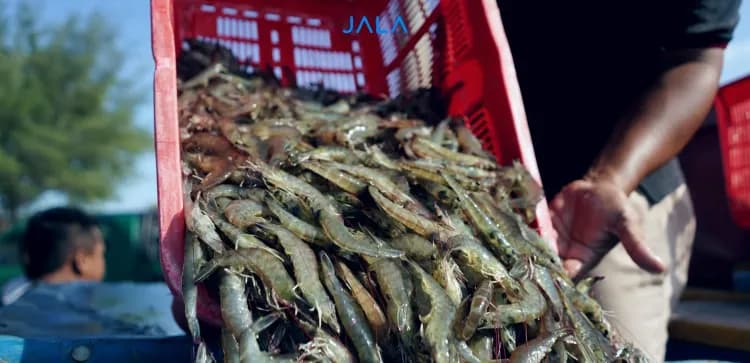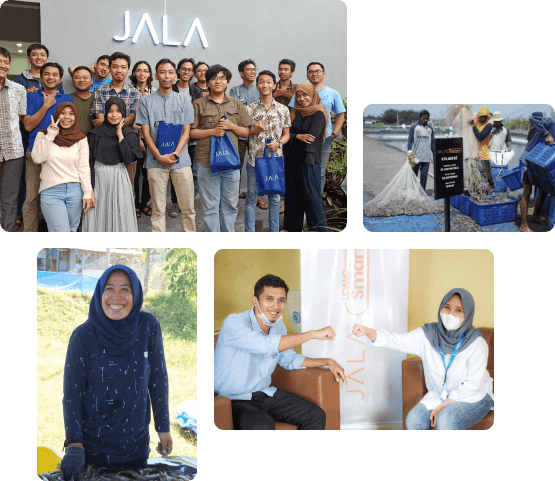
Indonesia’s shrimp industry is standing at a crossroads, facing a new trade agreement between the United States (US) and Indonesia. These changes are expected to significantly affect the industry's profitability, competitiveness, and market share in the US, its largest export destination.
Back in April 2025, US President Donald Trump announced a reciprocal tariff of 32% on Indonesia goods, sparking concern across global shrimp markets. However, on July 16, 2025, the administration revised the tariff to 19%, which will take effect on August 7, 2025. While this revised rate is more manageable than the original 32%, it still marks a substantial increase from the previous 0–10% range.
On the other side, the agreement also allows US goods to enter Indonesia tariff-free. This presents an opportunity for the local shrimp industry, especially with the potential for lower-priced, high-quality US soybean as one of the key ingredients in shrimp feed. Additionally, most broodstock used in Indonesia originates from the US, meaning cost savings in broodstock procurement. However, zero-tariff access for US seafood products, including shrimp, could heighten competition in Indonesia’s domestic market.
Best and Worst Case Impacts on Indonesia’s Shrimp Industry
The reduction of the tariff from 32% to 19% came as a relief amid uncertainty. Many exporters responded quickly by fast-tracking shipments to the US before the new tariff kicks in. Although the market has yet to fully stabilize, prices have begun to settle, offering a potential sign of recovery.
Although the 19% tariff remains a challenge, it is still relatively competitive compared to other countries such as Vietnam (20%) and India (25%). Even Ecuador, with a lower tariff of 10%, does not differ significantly. This shows that Indonesia still has room to compete in the US market. However, to build a more resilient shrimp industry and reduce reliance on a single destination, market diversification is essential. With the right strategy, potential demand declines can be mitigated, and and farm-gate shrimp prices could rise Rp2,000-Rp3,000.
What Indonesia’s Shrimp Industry Needs to Do
To stay resilient amidst trade pressures and global market changes, the industry must take key strategic actions. Here are several areas to focus on:
- Government and financial sector support. Indonesia Fisheries Processing and Marketing Entrepreneurs Association (AP5I) has urged the government to simplify licensing procedures and lower non-tax state revenue (PNBP) fees. At the same time, the banking sector is expected to improve access to affordable credit to support shrimp farming.
- Export market diversification. Heavy dependence on the US market poses a major risk, Indonesia must explore alternative export destinations such as the European Union, China, South Korea, and Japan to spread out market exposure and reduce vulnerabilities.
- Develop value added products. Instead of focusing solely on raw shrimp, exporters can explore cooked, marinated, or frozen processed shrimp to increase product value and reduce tariff impacts. These products also have higher market margins and competitive appeal.
- Strengthen industry collaboration. Close coordination among stakeholders including government, industry associations, farmers, and processors is critical. By sharing insights and jointly developing solutions, the industry can more effectively navigate common challenges and implement large scale strategies such as market diversification, value-added production, and sustainability certifications.
Conclusion
Amid rising export tariffs and global pressures, Indonesia’s shrimp industry must be more adaptive and resilient than ever. Through market diversification, improved farming practices, and strengthened collaboration, there are still opportunities for growth. Most importantly, we must keep our spirit and optimism alive. Indonesian shrimp farmers have faced many challenges, and now is the time to rise together once again. With the right support in data, technology, and policies, shrimp producers can sustain and even thrive in the future of aquaculture.
Technology adoption can start with JALA App, an integrated solution that supports shrimp farmers in making better decisions through smarter, data-driven farming.







